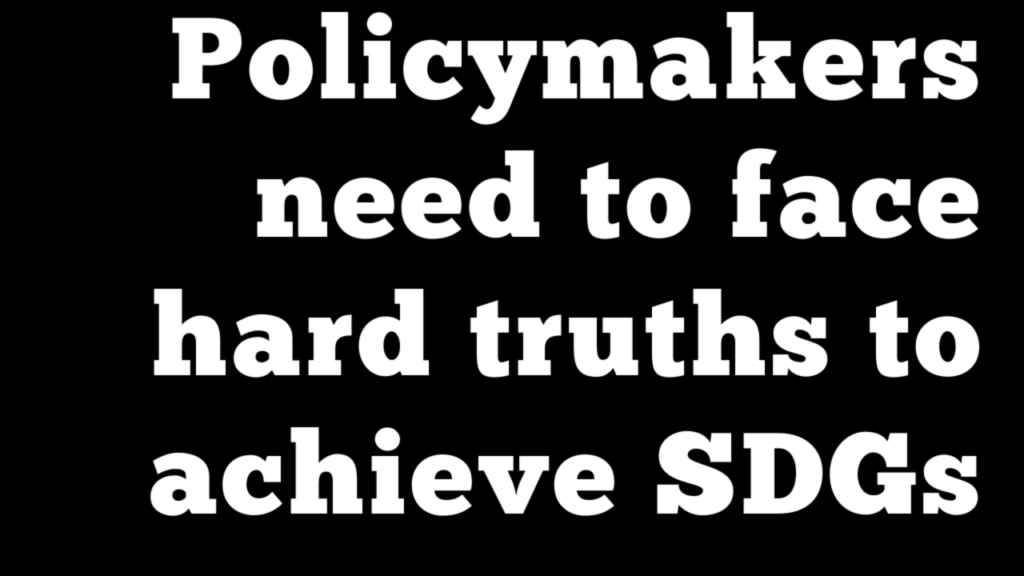Policymakers need to face hard truths to achieve SDGs

Here’s a note from Bob Eccles:
Today, Responsible Investor published a piece by me about financing the SDGs. My thanks to them and especially to Editor Lucy Fitzgeorge-Parker for doing so. This is an important topic and one to which we need to bring some hard-headed pragmatism.
The 17 Sustainable Development Goals were adopted by the United Nations on January 2, 2016. Initial estimates were that achieving them would require funding of $2.2-4.5 trillion per year. Soon after this the number $2.5 trillion appeared. This represents the “funding gap,” i.e., the amount of money needed from the private sector each year to complement money from the public sector. So more than 50% of the funding from the SDG was expected to come from the private sector.
It’s never been clear to me how this $2.5 trillion number was determined, but let’s say it’s true. (More recent estimates are that post-COVID 19 it has grown to $3.9 trillion.) Need is not the same thing as investment opportunities with the proper risk/return profile. The blunt fact of the matter is that these opportunities don’t come close to the need.
Unfortunately, this fact was not recognized in the early days when there was a lot of well-meaning but naïve enthusiasm about all the great business and investment opportunities being created by the SDGs. This was followed by pleas based on equally naïve arguments that the needed funding represents only 1.1% of total global financial assets.
Solving this funding gap requires finally scaling up “blended finance,” the combination of public and private capital to make investments (such as for infrastructure) attractive for private capital. Here much work needs to be done. Issues including generating a sufficient pipeline of projects, building capabilities in emerging markets ((e.g., financing, engineering, and project management), massive structural changes in the global architecture for development funding, and increasing the capital base of multinational development banks (but only after the former has happened).
Pragmatism also requires recognizing that there are some countries which, probably for the foreseeable future, will never be hospitable environments for private capital. They simply lack the necessary democratic institutions and rule of law to make this possible. As one indicator of this, according to Freedom House only 84 of 195 countries are rated as Free, with 54 as Partly Free, and 57 as Not Free. For the latter two, making the investment case for even blended finance will be difficult to impossible.
The question on my mind is which institution or group of institutions can lead the much need changes to facilitate the raising and investing of private capital to accomplish the SDGs. Something which needs to happen very quickly.
